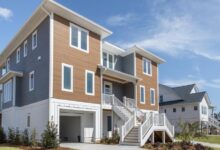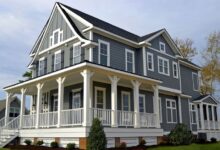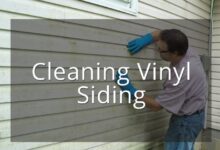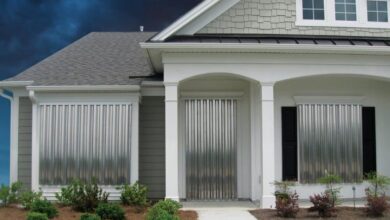When choosing siding for your home in colder regions, it’s essential to pick the right material that can withstand freezing temperatures, heavy snow, and strong winds. Best siding for cold climates is not only about durability but also about ensuring good insulation properties to help keep heating costs low. In this guide, we’ll dive into the best siding options for cold weather, their benefits, and give you a detailed comparison of the top products available.
Top 5 Siding Options for Cold Climates

Cold climates pose unique challenges for homeowners when it comes to exterior materials. Let’s take a look at five of the most reliable siding choices for homes in these conditions:
1. Vinyl Siding
Vinyl Siding – Shop Here
Vinyl siding is a popular choice for homeowners in cold climates due to its excellent insulation properties and low-maintenance nature. It is known for being durable and able to resist cold, snow, and ice without cracking or fading.
Pros:
- Affordable – One of the most cost-effective siding materials available.
- Energy-efficient – Vinyl provides good insulation to keep homes warm during the cold months.
- Low maintenance – Does not require frequent repainting or sealing.
- Durable – Resistant to the harshest weather conditions, including snowstorms.
Cons:
- Can become brittle in extremely cold temperatures.
- May fade over time with exposure to sunlight.
Price: $2 to $7 per square foot
Features:
- Available in various colors and styles
- Resists mold and mildew
- Easy to install and replace sections
2. Fiber Cement Siding
Fiber Cement Siding – Buy Now
Fiber cement is a premium siding material designed for durability in extreme weather. It is resistant to freezing temperatures and doesn’t warp or crack like wood can. Its thickness provides excellent insulation.
Pros:
- Long lifespan – Fiber cement can last 50+ years with minimal maintenance.
- Weather-resistant – Resists damage from ice, snow, and moisture.
- Fire-resistant – Incredibly safe for cold climates where fires are a concern.
Cons:
- More expensive compared to vinyl.
- Requires professional installation.
Price: $5 to $10 per square foot
Features:
- Can mimic the appearance of wood, stone, or brick
- Can be painted any color
- Low-maintenance once installed
3. Engineered Wood Siding
Engineered Wood Siding – Available Here
Engineered wood offers the beauty of real wood with the strength and durability to handle cold weather. This material is designed to resist the effects of moisture and freezing temperatures, making it ideal for snow-prone areas.
Pros:
- Environmentally friendly – Made from sustainable materials.
- Durable – Resists cracking and warping in cold weather.
- Aesthetic appeal – Offers the charm of wood with enhanced durability.
Cons:
- Can be more expensive than vinyl.
- Requires sealing and occasional maintenance.
Price: $4 to $9 per square foot
Features:
- Comes in a variety of colors and styles
- Resists mold and termites
- Easy to repair if damaged
4. Metal Siding (Steel or Aluminum)
Steel Siding – Shop Here
Steel or aluminum siding is incredibly durable and resistant to the cold. It’s ideal for areas with heavy snowfall or extreme cold, as it does not crack or warp like wood.
Pros:
- Extremely durable – Resists cracking, warping, and weathering.
- Fire-resistant – Ideal for areas where fire hazards are a concern.
- Low-maintenance – Does not require much upkeep.
Cons:
- Can be noisy when it rains or hails.
- Prone to dents and scratches from debris or hail.
Price: $6 to $15 per square foot
Features:
- Highly customizable with various colors and finishes
- Does not absorb moisture, preventing mold growth
- Resistant to corrosion
5. Log Siding
Log Siding – Purchase Here
Log siding is a traditional siding choice that offers natural insulation. It’s a great option if you want the rustic charm of log homes but with the ease of installation and maintenance of siding.
Pros:
- Natural insulation – Provides excellent thermal performance.
- Aesthetic charm – Ideal for homes looking for a rustic or country feel.
- Energy-efficient – Keeps the home warm by minimizing heat loss.
Cons:
- Expensive compared to other options.
- Requires regular maintenance to protect against decay and pests.
Price: $8 to $12 per square foot
Features:
- Natural look and feel
- Offers better insulation than many other materials
- Can be treated to resist pests and weather damage
Comparison Table
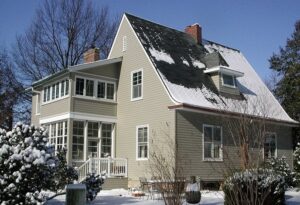
| Product | Use Case | Pros | Cons | Price Range | Key Features |
|---|---|---|---|---|---|
| Vinyl Siding | General use, residential | Affordable, low maintenance, energy-efficient | Can become brittle in extreme cold | $2 to $7/sq ft | Easy to install, resist fading |
| Fiber Cement | High durability and weatherproofing | Long-lasting, fire-resistant, weather-resistant | Expensive, requires professional installation | $5 to $10/sq ft | Mimics wood/stone, easy to paint |
| Engineered Wood | Residential, aesthetic appeal | Eco-friendly, durable, looks like wood | Needs sealing and maintenance | $4 to $9/sq ft | Resists mold, sustainable |
| Steel/Aluminum | Extreme weather areas | Very durable, fire-resistant, low-maintenance | Can dent, noisy in rain | $6 to $15/sq ft | Corrosion-resistant, customizable |
| Log Siding | Rustic, natural insulation | Great insulation, rustic charm, energy-efficient | Expensive, maintenance needed | $8 to $12/sq ft | Natural, energy-efficient, rustic |
Benefits of Using the Right Siding in Cold Climates
Choosing the right siding for your home in cold climates offers several benefits:
- Better Insulation
Certain siding materials, like fiber cement and engineered wood, provide excellent insulation, keeping your home warmer and reducing heating costs during the winter. - Durability and Longevity
Materials like steel and fiber cement are built to last, withstanding the harshest winter conditions. This means fewer repairs or replacements over the years, saving you money in the long run. - Weather Resistance
Cold climates often bring snowstorms and freezing rain. The best siding materials, such as vinyl and metal, are weather-resistant and will protect your home from the elements. - Low Maintenance
Vinyl and metal siding are incredibly low-maintenance options, reducing the time and money spent on upkeep. - Increased Home Value
A well-maintained home with quality siding can boost your property value, especially if you live in an area with harsh winters. It will look better and perform better, making your home more appealing to buyers.
Where to Buy and How to Purchase
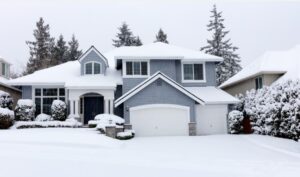
When looking to purchase siding for cold climates, it’s important to find a reputable supplier that offers quality products, competitive pricing, and reliable delivery. You can buy siding both in-store at home improvement retailers or online for convenience and potentially better deals. Below are the steps on where to buy and how to purchase the best siding for your needs.
1. Buy from Major Home Improvement Stores
Large retail stores like Home Depot, Lowe’s, and Menards typically have a wide range of siding options, including vinyl, fiber cement, and engineered wood, all of which are suitable for cold climates. These stores often have knowledgeable staff who can guide you on which siding would be best for your specific region. You can also find samples to compare in-person.
How to Buy:
- Visit the store: Go to a nearby location and browse the siding materials.
- Consult with experts: Talk to an in-store associate for advice on the best siding options for cold climates.
- Request a Quote: Many stores will provide estimates based on your square footage.
- Delivery: Home improvement stores often offer delivery services, or you can pick up the product yourself.
2. Online Retailers for Convenient Shopping
If you prefer shopping from the comfort of your home, online retailers are an excellent choice. Websites like Amazon, Wayfair, and BuildDirect offer a variety of siding options and provide user reviews, detailed product descriptions, and competitive pricing.
How to Buy:
- Browse by Category: Filter options by material (vinyl, fiber cement, metal, etc.) or by specific needs (insulation, durability, etc.).
- Read Reviews: Check customer feedback to see how the product performs in cold climates.
- Check for Discounts: Look for seasonal sales or bulk discounts if you’re purchasing a large quantity.
- Order Samples: Some websites offer free or low-cost samples so you can inspect the material before making a purchase.
Top Websites:
3. Specialized Siding Suppliers
Some companies specialize exclusively in siding and other exterior materials. These suppliers often provide a wider selection of high-quality products and tailored customer service. Examples include James Hardie (fiber cement) or CertainTeed (vinyl and engineered wood).
How to Buy:
- Visit the Brand Website: Directly buy from well-known brands like James Hardie or CertainTeed, which offer specialized products for cold climates.
- Request a Consultation: Many companies provide consultation services to help you choose the best siding based on climate conditions and aesthetics.
- Check for Warranty: Purchasing from specialized suppliers often comes with long-term warranties for their products, offering extra peace of mind.
Recommended Suppliers:
4. Local Siding Contractors and Installers
If you’re hiring a contractor for siding installation, they may offer discounts or package deals on materials. Contractors often have access to wholesale pricing or can recommend suppliers that offer high-quality products suitable for cold climates.
How to Buy:
- Consult with Local Contractors: Many contractors will help you purchase siding directly or provide a quote for the entire project, including materials and installation.
- Bundle with Installation: If you’re hiring a contractor for installation, inquire about package deals where both materials and labor are included in the price.
5. Buying Directly from Manufacturers
For those who want to skip the middleman, purchasing directly from manufacturers might be a good option. This is especially useful for bulk orders or custom siding needs.
How to Buy:
- Request a Quote: Manufacturers like Norandex or Alside provide custom quotes based on your project’s needs.
- Check for Bulk Discounts: Many manufacturers offer bulk pricing for larger orders, which can help reduce costs if you are doing a full home renovation.
Manufacturer Websites:
How to Purchase: Step-by-Step Guide
- Evaluate Your Needs:
- Consider the size of your project, climate conditions, and desired aesthetics.
- Determine whether you want professional installation or if you’re doing it yourself.
- Research and Compare Products:
- Look into materials like vinyl, fiber cement, and engineered wood. Check for ratings, reviews, and product specifications that are suited for cold climates.
- Get Quotes:
- If possible, get quotes from multiple suppliers and contractors to ensure you’re getting the best deal.
- Choose the Best Option:
- After comparing prices and features, choose the siding that offers the best balance of price, performance, and durability for your cold climate.
- Place Your Order:
- Proceed with purchasing either online or in-store. For large projects, ordering in bulk might save on shipping costs.
- Schedule Installation:
- If you’re hiring a contractor, arrange for the installation date. For DIY installation, ensure you have all the necessary tools and materials.
FAQs
1. What is the most affordable siding for cold climates?
Vinyl siding is generally the most affordable option, offering excellent insulation and durability for the price.
2. Can fiber cement siding withstand extreme cold?
Yes, fiber cement is highly resistant to cold and can handle extreme weather without warping or cracking.
3. How often do I need to maintain log siding?
Log siding needs regular maintenance to prevent moisture damage, including sealing every few years.
4. Is metal siding prone to rust in snowy areas?
No, modern metal siding is treated to resist corrosion and rust, making it perfect for snow-prone climates.
5. How do I choose the right siding for my home?
Consider factors like insulation, durability, and maintenance when choosing siding. It’s also important to think about aesthetics and your budget.
